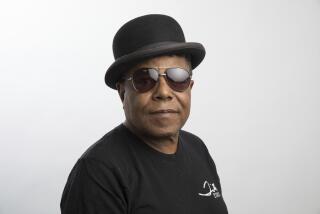Strong Beliefs in Fate of This Church
The squat Beaux Arts-style church with a terra cotta dome sits amid sleek high-rise towers, blocks from the new Rem Koolhaas-designed Central Library, in the heart of downtown.
The nearly 100-year-old structure has stirred civic passions for more than two decades. Now, the congregation of Seattle First United Methodist Church is discussing whether to stay in the architecturally distinctive but antiquated building or move to a new location.
A week ago, the wrecking ball loomed over the building as the congregation voted overwhelmingly to accept a developer’s deal to buy the property, raze the church and build an office tower. Included was a land swap that would give the congregation a new location in Belltown, just north of the downtown core, where it would build a new church. The overall value of the deal is unknown
But as with other twists in the church’s fate through the years, the matter didn’t rest there.
After a preservationist group called attention to the situation, a local redevelopment company immediately made a competing offer for the property, one that would preserve the 1907 building for another use.
The question of what to do with the aging structure is one facing thousands of congregations with old churches around the country, according to a 2001 report produced by Partners for Sacred Spaces, a national nonprofit group that studies the question of imperiled historic religious properties.
Designed with congregations of the past in mind and often in need of expensive renovation and upkeep, the old church buildings are heavy burdens on their members.
Cindy Evans Voorhees is an ordained Episcopal minister and the principal of Voorhees Design in Huntington Beach, which designs church interiors. She has seen congregations around the country with older buildings grappling with their financial burden.
“It’s a really painful process,” Voorhees said. “But for the churches involved, it’s often a question of survival.”
The future of Seattle’s last historic downtown church has been a subject of local controversy for more than 20 years.
In 1985, the Seattle Landmark Preservation Board voted to approve the building for landmark designation. Hoping to keep open any options regarding the sale of the property, First United Methodist fought that decision all the way to the state Supreme Court, where in 1996 it won. The court held that the designation was a violation of the church’s right to free exercise of religion.
The Rev. Dr. Kathlyn R. James, the congregation’s senior pastor, said the building’s problems included safety issues, parking and handicap access, and the cost of maintaining a nearly century-old building.
“The building infrastructure, heating, plumbing -- those things are ready to go,” she said. The congregation could easily spend $50,000 or more a year just on maintenance, she said, and “that just isn’t possible.”
James noted that in addition to its services to members, First United Methodist worked with the city’s homeless population, running two shelters. Church leaders have long worried that the cost of the building’s upkeep would keep the church from its missions.
“After the Nisqually earthquake” in 2001, “it cost us $350,000 just to get back in the door. A total retrofit would be around $15 million,” James said. “We studied the question and realized that our options were to move or to end up closing the doors.”
John Schack has a personal and a professional interest in First United Methodist. “It’s an incredibly important building for Seattle -- it’s part of our history, and it’s a beautiful building,” the lifelong Seattle resident said. When he was a child, his love for the building stemmed from the knowledge that his great-grandfather, James Schack, was one of its architects.
John Schack, also an architect, is one of the original members of Save Our Sanctuary, formed in March to increase public awareness about the church building. The group has held several rallies at the church and is working with local officials to find an alternative to the deal the church has on the table.
On its website, Save Our Sanctuary points to the former St. Vibiana’s Cathedral in downtown Los Angeles as an example of a successful outcome in a similar situation. The cathedral, which was heavily damaged in the 1994 Northridge earthquake, has been restored and last fall reopened as Vibiana Place, a community arts center.
In Seattle, an offer emerged last week that would save the sanctuary and put it to some other use. A local development company, known for its rehabilitation of historic buildings, offered the church $23.2 million for the deal.
Dow Constantine, a King County councilman long interested in preserving the church, helped put the offer together. “Almost all the pieces are in place,” he said. “We’re very close to finding a good outcome for everyone.”
Pastor James, while acknowledging that the $23.2 million is an offer the church might consider, says a site for a future church is a key issue. The letter Constantine sent the church outlining the offer stated, in part, that “we have identified a minimum of three solid prospects for a replacement site in the greater downtown area.”
But it isn’t a solid land swap, like the deal now on the table.
“We can’t take an offer that essentially leaves us homeless,” James said. The church will hear offers until the first week of July, when the land-swap deal will become “expensive to get out of,” James said.
Michael Godfried, president of Save Our Sanctuary, said the congregation needed to think about its legacy. “Do they want to go down in history as the congregation that let the sanctuary be demolished? Don’t they have a social responsibility to take a deal that preserves the building if they can?”
James said she understood the passion of the preservationists, but added: “Our core mission isn’t the preservation of old buildings.”
More to Read
The biggest entertainment stories
Get our big stories about Hollywood, film, television, music, arts, culture and more right in your inbox as soon as they publish.
You may occasionally receive promotional content from the Los Angeles Times.










